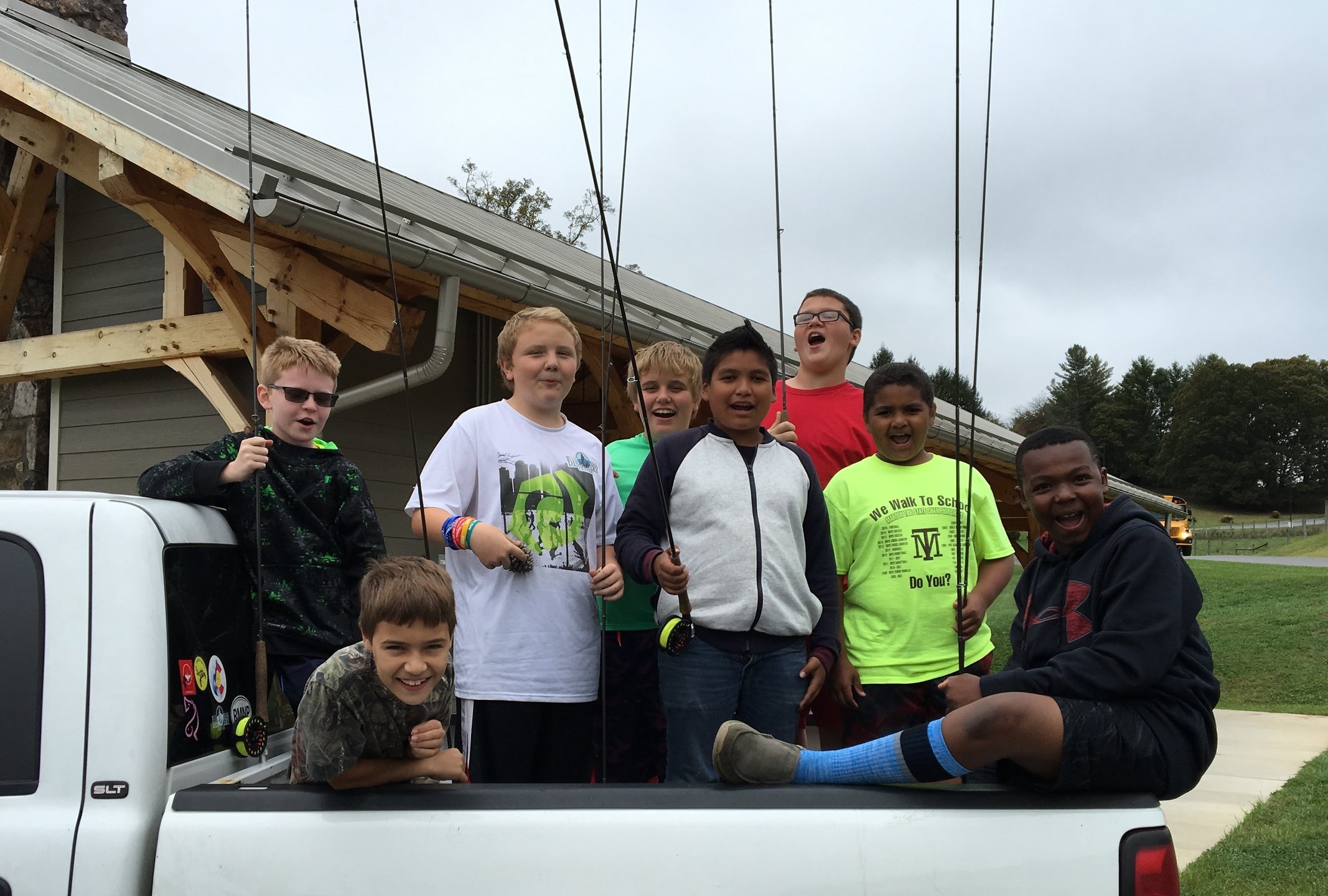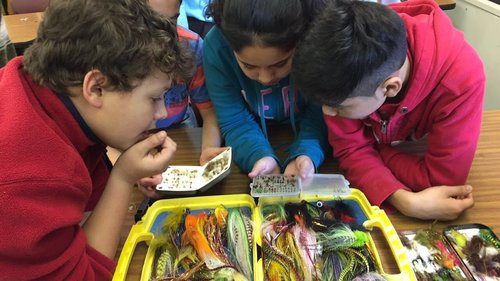

Fly Fishing during Galax Intersession
Nine eager young fellas joined BRDC for the week to learn all about fly fishing

Learning about Amphibians & Aquatic Insects
BRDC has been busy with education programs, working with Galax Middle School, Fries School, Fairview Elementary, Grayson Highlands, Independence Elementary.
Grayson County's fourth grade students participated in the Natural Heritage Program with an emphasis on salamanders, toads, and frogs. Students learned about salamanders commonly found in the Blue Ridge.

Fries School Investigates the New River
Fries School joins Blue Ridge Discovery Center's staff for a day of Aquatic Adventure.

Galax Enrichment Week - Aquatic Adventures
Despite the LOW pressure system hanging over the area bringing inches of rain, the students enthusiasm remained HIGH. They spent the week away from campus at Dannelly Park enjoying Aquatic Adventures.